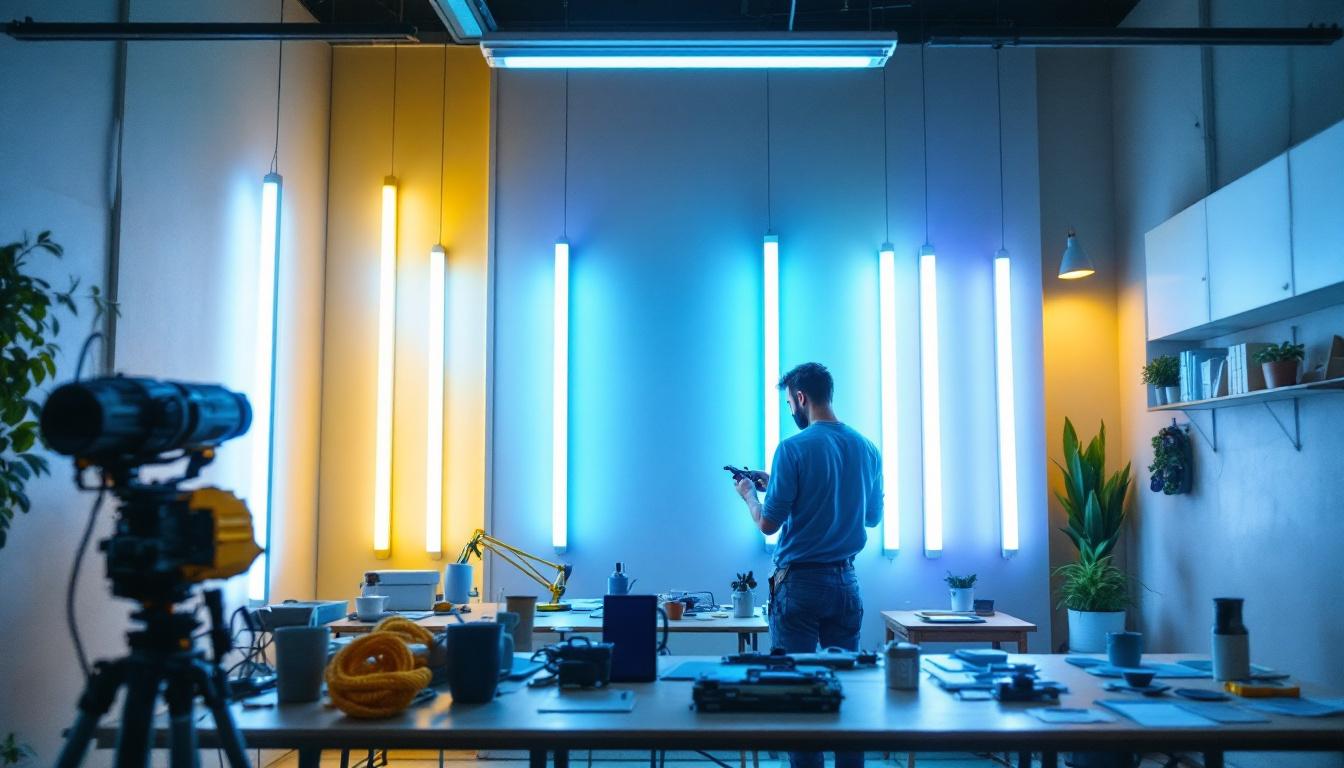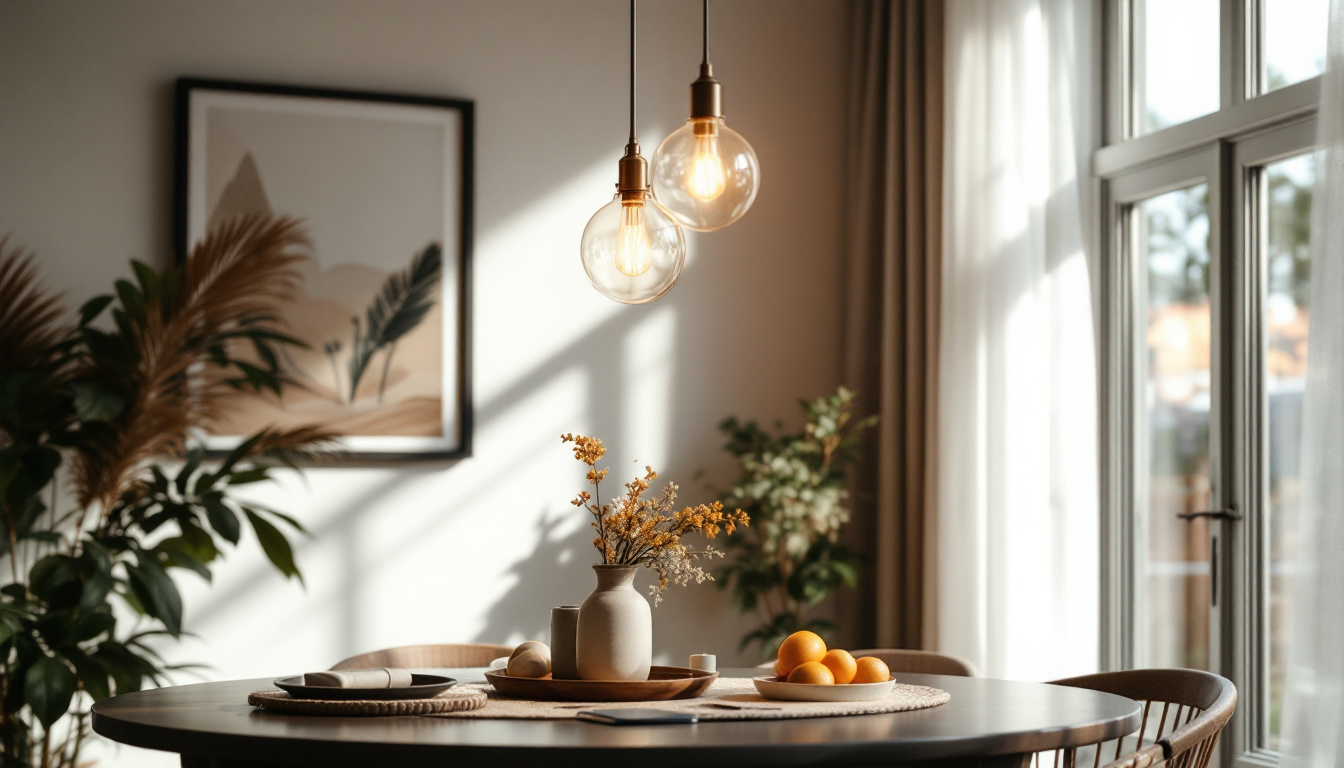
When clients ask for “long lights,” they’re often referring to lighting fixtures that are elongated in shape, designed to cover larger areas or provide uniform illumination over extended surfaces. For lighting contractors, knowing the correct terminology not only helps in clear communication but also positions you as a knowledgeable professional in the eyes of clients and suppliers.
The most common term for these fixtures is linear lighting. Linear lights come in various forms, including LED strips, fluorescent tubes, and integrated linear fixtures. They are widely used in commercial, industrial, and residential settings where continuous, even lighting is required.
Other names you might encounter include strip lights, batten lights, or simply tube lights. However, “linear lighting” is the umbrella term that covers all these types and is preferred in professional circles.
Linear lighting can be broken down into several categories based on technology and application:
In addition to the types listed above, it’s important to consider the various applications of linear lighting. For instance, in retail environments, linear lights can be strategically placed to highlight product displays, creating an inviting atmosphere that encourages customer engagement. The ability to dim or change the color temperature of LED linear fixtures also allows for dynamic lighting schemes that can adapt to different times of day or special events, enhancing the shopping experience.
Moreover, the design of linear lighting fixtures has evolved significantly, with sleek and modern aesthetics that can complement contemporary architecture. Many manufacturers now offer customizable options, allowing designers and contractors to select lengths, finishes, and even integrated smart technology for enhanced control. This adaptability not only meets functional requirements but also contributes to the overall design narrative of a space, making linear lighting an essential element in modern interior design.
Knowing the exact terms and types of long lights is more than just semantics. It directly impacts your ability to specify the right products, estimate costs accurately, and communicate effectively with clients and suppliers.
Using precise terminology helps avoid costly mistakes such as ordering the wrong fixtures or misinterpreting client needs. For example, a client asking for “long lights” in a retail space might expect sleek, modern LED linear fixtures, while in a warehouse, they might be referring to rugged high bay linear lights.
Additionally, understanding the different types allows contractors to recommend solutions that optimize energy efficiency, meet lighting codes, and enhance the aesthetic appeal of the space—factors that can significantly boost your reputation and profitability.
Clients often rely on contractors to guide them through technical decisions. When you can confidently explain the differences between fluorescent tubes, LED linear fixtures, and strip lights, it builds trust. This trust can lead to repeat business and referrals, which are invaluable for long-term success.
Moreover, effective communication about lighting options can also empower clients to make informed decisions that align with their vision and budget. For instance, discussing the benefits of dimmable LED fixtures can open up possibilities for creating versatile atmospheres in spaces like restaurants or galleries. By illustrating how different lighting solutions can enhance the functionality and ambiance of a space, you not only demonstrate your expertise but also position yourself as a valuable partner in their project.
Furthermore, staying updated on the latest trends and technologies in lighting can set you apart from competitors. Clients appreciate contractors who can provide insights into innovative products, such as smart lighting systems that allow for remote control and automation. By integrating such advanced solutions into your proposals, you can showcase your commitment to quality and modernity, ultimately leading to more satisfied clients and a stronger portfolio.
Long lights present unique opportunities to increase your profit margins. Their versatility and growing demand in various sectors mean you can expand your service offerings and upsell effectively.
Many businesses and homeowners are actively seeking to reduce energy consumption and lower utility bills. Offering LED linear lighting upgrades as replacements for outdated fluorescent tube systems is a lucrative avenue. LEDs consume less power, require less maintenance, and often qualify for rebates or incentives.
Highlighting these benefits to clients not only adds value but also justifies premium pricing for your installation services. Plus, LED systems’ longer lifespans reduce callbacks and maintenance visits, freeing up your time for new projects. Additionally, educating clients about the environmental impact of their lighting choices can resonate well, as many are increasingly conscious of their carbon footprint. By positioning your services as a sustainable choice, you can attract eco-minded customers who are willing to invest more for greener solutions.
Linear lighting can be tailored to fit unique architectural features or specific lighting needs. Providing design consultations that incorporate customized lengths, color temperatures, and dimming options can set you apart from competitors.
For example, in office environments, you might suggest tunable white LED linear fixtures that adjust color temperature throughout the day to boost employee productivity. In retail, accent linear lights can highlight merchandise and improve the shopping experience. Furthermore, consider showcasing your design capabilities through case studies or portfolio pieces that illustrate successful installations. This not only builds credibility but also inspires potential clients to envision how your solutions can transform their spaces, making them more likely to engage your services.
Long lights are often part of larger lighting projects involving multiple fixture types and controls. Bundling installation, programming, and maintenance services creates comprehensive packages that clients appreciate. This approach not only increases your average job size but also fosters ongoing relationships.
Moreover, consider offering maintenance contracts as part of your bundled services, ensuring that clients have peace of mind knowing their lighting systems will remain efficient and functional over time. This not only provides a steady revenue stream but also positions you as a trusted partner in their ongoing success. By being proactive in your communication and follow-ups, you can identify additional needs or upgrades, further solidifying your role as an essential resource in their lighting strategy.
Understanding the technical aspects of long lights ensures smooth installations and satisfied clients. Here are key factors to keep in mind:
Linear fixtures, especially longer runs, require careful planning of power distribution. Voltage drop can become an issue in extended LED strip installations, potentially causing uneven brightness or color shifts.
Properly sizing drivers, selecting compatible dimming systems, and adhering to electrical codes are essential. Consulting manufacturer specifications and using professional design software can prevent costly errors.
Moreover, it’s important to consider the total wattage of the fixtures being installed. Overloading a circuit can lead to overheating and potential fire hazards. Utilizing a load calculator can help in determining the maximum number of fixtures that can be safely connected to a single circuit. Additionally, the use of high-quality wiring and connectors that can handle the required current will further ensure the longevity and reliability of the lighting system.
Installation methods vary widely—from recessed mounting in ceilings to surface mounting on walls or suspending from ceilings. Each method has implications for aesthetics, light distribution, and maintenance access.
For example, recessed linear fixtures offer a clean, integrated look but require precise ceiling modifications. Surface-mounted options are easier to install but may not suit all design schemes. When choosing the mounting method, consider the overall design intent of the space. For instance, suspended fixtures can create a striking visual effect in open areas, while wall-mounted options can enhance architectural features or highlight artwork.
It’s also worth noting that the height at which lights are mounted can significantly affect the quality of illumination. Lower installations may provide more direct lighting, which is ideal for task-oriented areas, while higher placements can create a more ambient atmosphere. Understanding the specific needs of each space will guide you in selecting the most effective mounting strategy.
Clients increasingly demand lighting that enhances the appearance of spaces and products. Selecting fixtures with high color rendering index (CRI) values and appropriate color temperatures is critical.
Understanding how different linear lights affect ambiance and visibility allows you to make recommendations that improve client satisfaction and reduce change orders. For instance, warm white light (around 2700K to 3000K) is often preferred in residential settings for its cozy and inviting feel, while cooler temperatures (4000K to 5000K) are more suitable for commercial spaces where clarity and focus are paramount.
Additionally, the use of tunable white technology is gaining popularity, allowing users to adjust the color temperature according to the time of day or specific activities. This flexibility not only enhances the functionality of the space but also contributes to the well-being of its occupants by mimicking natural daylight patterns. As lighting technology continues to evolve, staying informed about these advancements will empower you to provide cutting-edge solutions that meet diverse client needs.
Effectively marketing your expertise with long lights can attract new clients and increase project sizes. Here are some practical tips:
Visual proof of your work is powerful. Create a portfolio featuring before-and-after photos of spaces illuminated with linear lighting. Highlight the benefits such as improved brightness, energy savings, and aesthetic upgrades.
Writing blog posts, producing videos, or hosting webinars about the advantages of linear lighting positions you as an expert. Topics could include energy savings, design trends, or maintenance tips.
Collaborate with lighting manufacturers and distributors to access training, promotional materials, and exclusive product lines. These partnerships can enhance your credibility and provide competitive pricing.
Long lights, or linear lighting, are more than just fixtures-they’re opportunities. For lighting contractors, mastering the terminology, technical details, and marketing strategies surrounding these fixtures unlocks new revenue streams and strengthens client relationships.
By focusing on energy-efficient upgrades, offering customized solutions, and ensuring flawless installations, contractors can boost profits while delivering superior value. Clear communication and ongoing education further cement your role as a trusted advisor in the lighting industry.
Ultimately, understanding what long lights are called and how to leverage them effectively is a cornerstone of success in today’s competitive market.
Ready to elevate your lighting game and boost your bottom line? At LumenWholesale, we’re committed to providing you with the highest quality linear lighting solutions that meet your project’s needs. With our unbeatable wholesale prices and hassle-free bulk buying, you can access a vast selection of spec-grade lighting products without the extra costs. Say goodbye to inflated markups and hello to reliable, high-performance lighting that delivers on both value and efficiency. Plus, with free shipping, you can enjoy the convenience and savings that come with choosing LumenWholesale. Don’t compromise on quality or price—Wholesale Lighting at the Best Value is just a click away.

Discover the benefits of T-8 bulbs in lighting installations and how they enhance safety and efficiency.

Discover the transformative advantages of RGB LEDs for lighting contractors, from energy efficiency and vibrant color options to enhanced design flexibility and cost savings.

Discover the essential checklist for selecting the perfect pendant lighting for your dining room.

Discover how innovative lighting solutions for cathedral ceilings are transforming the industry for lighting contractors.